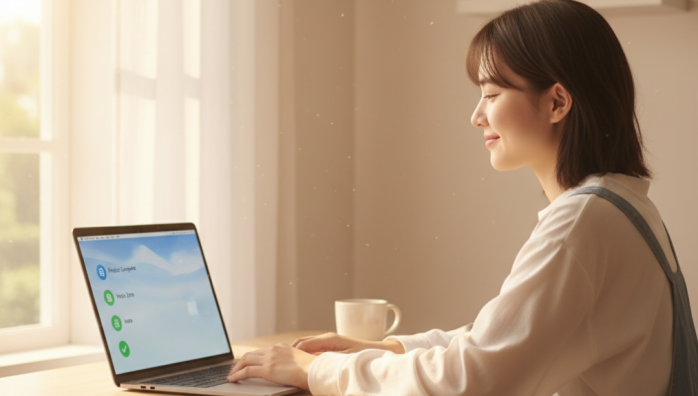Decluttering Digital Files and Apps
by admin in Productivity & Tools 17 - Last Update November 15, 2025

My digital life used to feel like a room I was afraid to enter. My desktop was a chaotic collage of screenshots and random documents, my phone was bloated with apps I hadn't opened in months, and my cloud storage was a digital landfill. I knew I needed to change, but every time I tried, I ended up more overwhelmed than when I started. It took a few failed attempts for me to realize the truth: I wasn't just organizing, I was hoarding.
Why most digital decluttering advice failed me
I read all the articles and tried all the popular methods. I created intricate folder systems with dozens of sub-folders. I downloaded apps meant to organize other apps. Honestly, it just created more work. The problem wasn't the lack of a system; it was the sheer volume of digital 'stuff' I was holding onto 'just in case'. The real breakthrough for me came when I shifted my mindset from organizing to eliminating. It’s not about finding a prettier box for your junk; it’s about getting rid of the junk altogether.
My two-step process for reclaiming digital sanity
Instead of a massive, one-time overhaul that would lead to burnout, I developed a simple, sustainable process. It’s based on ruthless elimination and mindful acquisition. It’s not about achieving a perfect, sterile environment, but a functional and peaceful one.
Step 1: The great app purge
My phone was the first target. The constant notifications and endless icons were a huge source of distraction. Here’s what I did:
- The home screen test: I moved every single app off my main home screen into a single folder on the second screen. For the next week, I only moved an app back to the home screen if I used it. It was shocking how few I actually needed.
- The 30-day rule: I went through my app list and asked one question: "Have I used this in the last 30 days?" If the answer was no, I deleted it without hesitation. The fear of needing it later was just that—fear. I realized I could re-download almost any app in seconds if I truly needed it again.
- Notification neutering: For the apps that remained, I disabled all non-essential notifications. This single change brought an immediate sense of calm and focus.
Step 2: Taming the file jungle
My computer files were a bigger beast. Years of downloads, old project files, and duplicates were everywhere. I resisted the urge to create a complex system and instead adopted a radically simple structure:
- Create a 'Triage' folder: All new downloads and files go here. Nothing lives on my desktop. At the end of each day, I spend five minutes processing this folder.
- The A.A.R. system: From the Triage folder, every file goes to one of three places. 'Active' for current projects, 'Archive' for completed work, and 'Resources' for reference material. That’s it. No complicated nesting.
- Embrace the search function: I stopped worrying about perfect folder placement. Modern operating systems have powerful search tools. As long as a file is in one of those three main buckets, I know I can find it in seconds with a quick search. This was incredibly liberating.
Maintaining the calm: a system, not a one-time fix
This isn't a project you finish; it's a habit you build. I spend about 15 minutes every Friday afternoon doing a 'digital reset'—clearing my Triage folder, deleting unused apps, and unsubscribing from email newsletters. This small, consistent effort prevents the digital clutter from ever piling up again. The result isn't just a clean desktop; it's a clearer mind, less stress, and a surprising amount of reclaimed focus.














